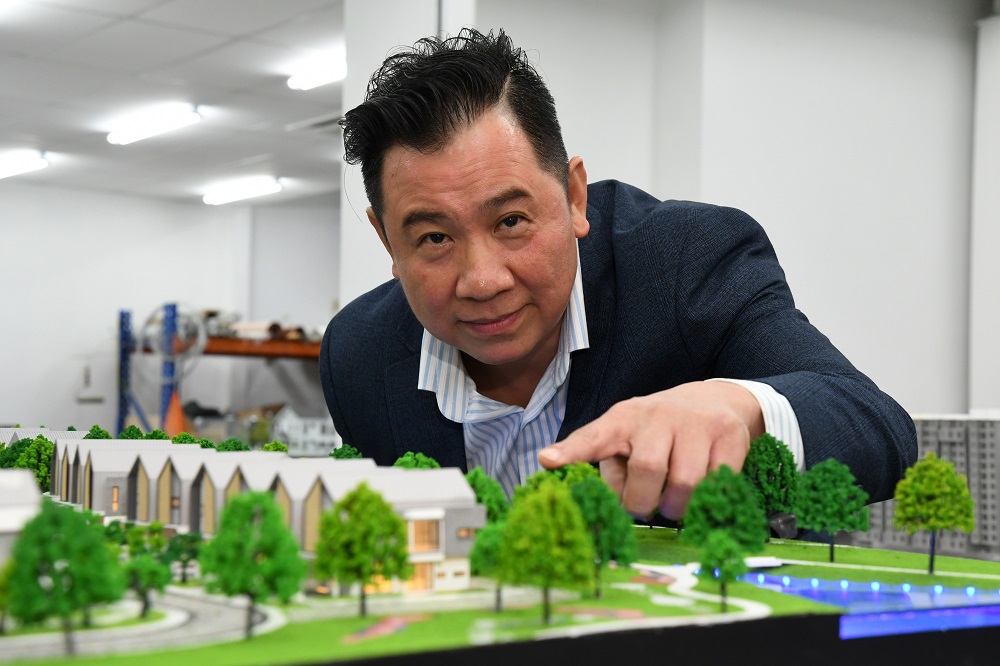Understanding the Real Estate Model Singapore
Singapore’s real estate landscape stands out globally, not just for its impressive skyline but also for the robust framework that governs it. Characterized by a unique blend of government intervention and private market dynamics, Singapore’s model may serve as a guiding blueprint for urban development worldwide. This article delves into the various aspects of the real estate model Singapore, highlighting its strengths, challenges, and future potential.
1.1 Overview of Singapore’s Housing Landscape
Singapore’s housing market is predominantly dominated by public and private housing schemes, with the government playing a pivotal role in ensuring that a substantial percentage of the population has access to affordable housing. Approximately 80% of Singaporeans live in HDB (Housing Development Board) flats, which are thoughtfully designed to accommodate the diverse needs of the population. This concentrated approach to housing ensures not only shelter but fosters a sense of community across different demographics.
The government’s vision has led to a systematic planning regime where 90% of residents have access to homeownership, a rarity in many global cities today. The unique philosophy behind this housing model is to integrate various socio-economic classes within the community, ensuring inclusivity and cohesion.
1.2 Government’s Role in Real Estate Development
The Singaporean government exerts substantial control over land resources through policies that govern land-use and zoning. The Urban Redevelopment Authority (URA) of Singapore is responsible for long-term urban planning and land use strategy, optimizing land resources for sustainable development. This planning includes developing new towns equipped with necessary amenities such as schools, parks, and public transport links.
Public-Private Partnerships (PPPs) form the backbone of urban infrastructure projects, engaging private developers to deliver high-quality housing while leveraging governmental support and incentive structures. These partnerships have resulted in swift development cycles and innovative solutions tailored to meet contemporary urban challenges.
1.3 Key Characteristics of Singapore’s Model
Several characteristics make Singapore’s real estate model distinctive:
- Government Intervention: The government is a significant player, not just a regulator. It owns approximately 90% of Singapore’s land, dictating housing availability, pricing, and development plans.
- Comprehensive Planning: Long-term planning ensures the sustainability of the built environment, with careful attention to the needs of future generations.
- Focus on Homeownership: Incentives aimed at promoting homeownership, including grants and subsidies, have resulted in the country’s exceptionally high homeownership rates.
- Mixed Housing Developments: Strategic planning mixes various housing types, ensuring a balance of low-income and high-income residents, promoting social integration.
Benefits of the Real Estate Model Singapore
2.1 High Home Ownership Rates
One of the most notable successes of Singapore’s housing model is the high home ownership rate, currently standing at approximately 90%. This achievement can be attributed to several factors, including government subsidies, a robust public housing scheme, and favorable loan conditions through the Housing Development Board (HDB).
Policies such as the Central Provident Fund (CPF), which allows citizens to use their savings for home purchases, play a significant role in fostering a culture of home ownership. Additionally, first-time buyers are often eligible for various grants, easing the financial burden associated with purchasing a home.
2.2 Effective Urban Planning Strategies
Singapore’s urban planning strategies are lauded for their effectiveness, integrating green spaces, public facilities, and transportation infrastructure seamlessly within residential areas. This thoughtful integration contributes to a high quality of life for residents, minimizing travel times and enhancing social interaction.
The concept of “liveability” is central to Singapore’s urban design, fostering an environment where residents can live, work, and play without needing to commute long distances. Innovations such as the use of smart technology for traffic management and energy efficiency in buildings exemplify Singapore’s commitment to enhancing urban functionality.
2.3 Enhanced Quality of Life in Urban Settings
By prioritizing green spaces, public amenities, and community engagement in development plans, Singapore has cultivated an environment that promotes a high quality of life. Parks and recreational spaces are integral to urban neighborhoods, encouraging physical activity and social interaction among residents.
Internationally recognized for its cleanliness and organization, Singapore’s urban landscape is a reflection of effective governance and community involvement. Programs promoting community bonding, such as neighborhood events and support networks, contribute further to the overall well-being of residents.
Challenges and Criticisms of the Singapore Model
3.1 Affordability Issues for Low-Income Households
Despite widespread home ownership, affordability issues remain a significant concern for low-income households. While the government provides various grants and subsidies, rising property prices and the high cost of living can hinder access to housing for segments of the population.
The disparity in income and the increasing demand for property due to foreign investment contribute to the affordability crisis. Critics argue that the model’s success is not uniformly shared, leading to social stratification as lower-income families may find themselves unable to afford suitable living conditions.
3.2 Labor Costs and Exploitative Practices
Singapore’s rapid development has often relied on a large migrants workforce, prompting criticisms regarding labor practices. Reports have surfaced of exploitative conditions within the construction industry, raising ethical concerns regarding human rights and labor treatment.
With a pressing need for affordable housing, the government must seek a balance between cost efficiency and the treatment of laborers, ensuring a sustainable approach to real estate development that does not exploit workers.
3.3 Sustainability and Environmental Concerns
As one of the world’s most densely populated cities, Singapore faces significant environmental challenges. Urbanization has led to increased carbon footprints and a strain on natural resources. Critics assert that current models need to shift focus towards more sustainable practices, addressing issues of waste management, water conservation, and energy use.
The government has begun to recognize these concerns, integrating sustainability into future development plans. Initiatives to promote green buildings, urban farming, and eco-friendly transport are steps towards a more sustainable urban future.
Comparative Analysis with Other Real Estate Models
4.1 Public-Private Partnerships in Urban Development
Comparing Singapore’s real estate model with those of other nations reveals intriguing insights, particularly regarding Public-Private Partnerships (PPPs). While Singapore successfully utilizes PPPs to enhance urban infrastructure, countries like the UK and the US often experience setbacks with poorly structured partnerships.
The Singaporean government’s clear strategic vision and regulatory framework provide a template for successful collaborations between public and private entities, ensuring mutual benefit and sustainable outcomes in urban development.
4.2 Lessons from Other Countries’ Housing Policies
Internationally, various countries grapple with similar housing challenges, yet their approaches vary significantly. For example, Nordic countries like Sweden prioritize social housing, providing a robust welfare net to ensure all citizens have access to basic living conditions.
Lessons from these different models can provide insights for Singapore, particularly in addressing issues concerning affordability and inclusivity. The adaptability of housing policies can greatly influence a region’s ability to respond to emerging socio-economic challenges.
4.3 Adaptability of the Singapore Model in Global Contexts
The Singapore real estate model has garnered attention globally for its potential adaptability in varying contexts. As urbanization accelerates worldwide, cities facing housing shortages and economic disparities can learn from Singapore’s experience in balancing public and private sector roles through strategic planning.
However, it is essential to recognize that each city has unique historical and cultural factors. The principles of good governance, cohesive planning, and community engagement as exemplified by Singapore can serve as guiding pillars for successfully addressing urban housing challenges elsewhere.
Future of Singapore’s Real Estate Model
5.1 Innovations and Technological Integration
Looking forward, technological integration is poised to revolutionize Singapore’s real estate landscape further. Smart technologies that enhance efficiency in energy consumption, transportation, and construction processes will play a pivotal role in urban development.
Innovative platforms for property management and maintenance, using artificial intelligence and data analytics, can ensure properties meet the evolving needs of residents while minimizing environmental impacts.
5.2 Projected Trends in Urban Housing
The real estate market in Singapore is expected to undergo significant changes in line with demographic trends — increased urbanization, a growing elderly population, and the demand for flexible living arrangements are all reshaping housing needs.
Future developments may emphasize mixed-use neighborhoods that combine residential space with commercial and community amenities, fostering vibrant, self-sustaining communities that cater to diverse lifestyle needs.
5.3 Role of Community Engagement in Development
Community engagement will remain fundamental to Singapore’s housing model as it evolves. Ensuring that residents are involved in decision-making processes regarding neighborhoods can bolster satisfaction, enhance social cohesion, and encourage shared responsibility for communal well-being.
Active community participation can also drive initiatives aimed at sustainability and neighborhood beautification, promoting a sense of belonging and pride in local areas.



